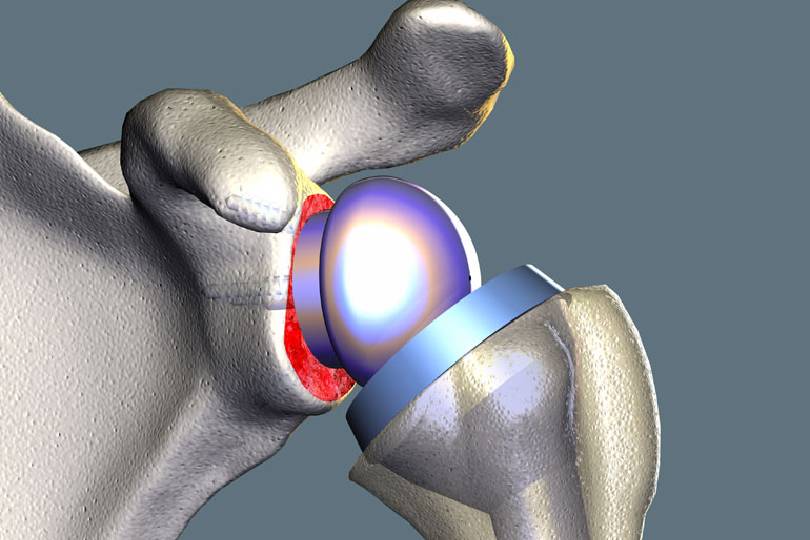Shoulder Replacement Surgery

A Comprehensive Guide for Patients Introduction
Shoulder replacement surgery, also known as shoulder arthroplasty, is a surgical procedure aimed at relieving pain and restoring function in a damaged or diseased shoulder joint. This comprehensive guide aims to provide clear and accessible information to individuals considering or undergoing shoulder replacement surgery.
Understanding the Shoulder Joint
The shoulder joint is a complex structure consisting of the humerus (upper arm bone), scapula (shoulder blade), and clavicle (collarbone). It is a ball-and-socket joint that allows for a wide range of motion, enabling activities such as lifting, reaching, and throwing.
Common Causes of Shoulder Joint Damage
- Osteoarthritis: Wear and tear over time can lead to the deterioration of cartilage within the shoulder joint, resulting in pain, stiffness, and loss of mobility.
- Rheumatoid Arthritis: An autoimmune condition that causes inflammation in the synovium, leading to cartilage and bone damage in the shoulder joint.
- Post-Traumatic Arthritis: Previous shoulder injuries or fractures can increase the risk of developing arthritis and joint degeneration over time.
- Rotator Cuff Tears: Injuries or tears in the rotator cuff muscles can lead to chronic shoulder pain and instability, necessitating surgical intervention in severe cases.
Indications for Shoulder Replacement Surgery
Candidates for shoulder replacement surgery typically experience:
Persistent shoulder pain that does not respond to conservative treatments such as rest, physical therapy, or medication.
Loss of shoulder function and mobility, affecting daily activities and quality of life.
Severe joint damage or degeneration as confirmed by diagnostic imaging studies such as X-rays or MRI scans.
Types of Shoulder Replacement Surgery
- Total Shoulder Replacement: Involves replacing the damaged ball-and-socket joint surfaces with artificial components made of metal and plastic.
- Partial Shoulder Replacement (Hemiarthroplasty): Only the humeral head (ball portion) of the joint is replaced with a prosthetic component, while the natural socket (glenoid) is preserved.
- Reverse Shoulder Replacement: Specifically designed for patients with severe rotator cuff tears and dysfunction, this procedure reverses the anatomy of the shoulder joint, placing the ball component on the scapula and the socket component on the humerus.
The Surgical Procedure
- Preoperative Preparation: Prior to surgery, patients undergo a thorough evaluation, including medical history review, physical examination, and diagnostic imaging studies.
- Anesthesia: Shoulder replacement surgery is typically performed under general anesthesia, although regional anesthesia options may also be considered.
- Surgical Approach: Surgeons may utilize traditional open surgery or minimally invasive techniques, depending on the patient’s condition and surgical goals.
- Implant Placement: The damaged components of the shoulder joint are carefully removed, and the artificial implants are secured in place using specialized surgical instruments and techniques.
- Closure and Recovery: Following the procedure, incisions are closed, and patients are monitored closely in the recovery room before transitioning to a postoperative care unit or rehabilitation facility.
Postoperative Recovery and Rehabilitation
- Pain Management: Patients receive pain medication and anti-inflammatory drugs to manage postoperative discomfort and swelling.
- Physical Therapy: A structured rehabilitation program is essential for restoring shoulder strength, mobility, and function. Physical therapists guide patients through exercises and stretches designed to improve range of motion and prevent stiffness.
- Activity Restrictions: Patients are advised to avoid strenuous activities and heavy lifting during the initial recovery period to prevent implant complications and promote optimal healing.
- Long-Term Follow-Up: Regular follow-up appointments with the surgical team are scheduled to monitor postoperative progress, address any concerns or complications, and adjust treatment as needed.
Potential Risks and Complications
While shoulder replacement surgery is generally safe and effective, potential risks and complications may include:
- Infection at the surgical site
- Nerve damage or injury
- Implant loosening or dislocation
- Blood clots or deep vein thrombosis (DVT)
Conclusion
Shoulder replacement surgery is a valuable treatment option for individuals suffering from chronic shoulder pain and dysfunction due to arthritis, injury, or other underlying conditions. By understanding the indications, surgical techniques, and postoperative care involved, patients can make informed decisions and achieve successful outcomes in their journey toward shoulder pain relief and improved quality of life. Always consult with a qualified healthcare professional for personalized advice and treatment recommendations based on individual medical needs and circumstances.
